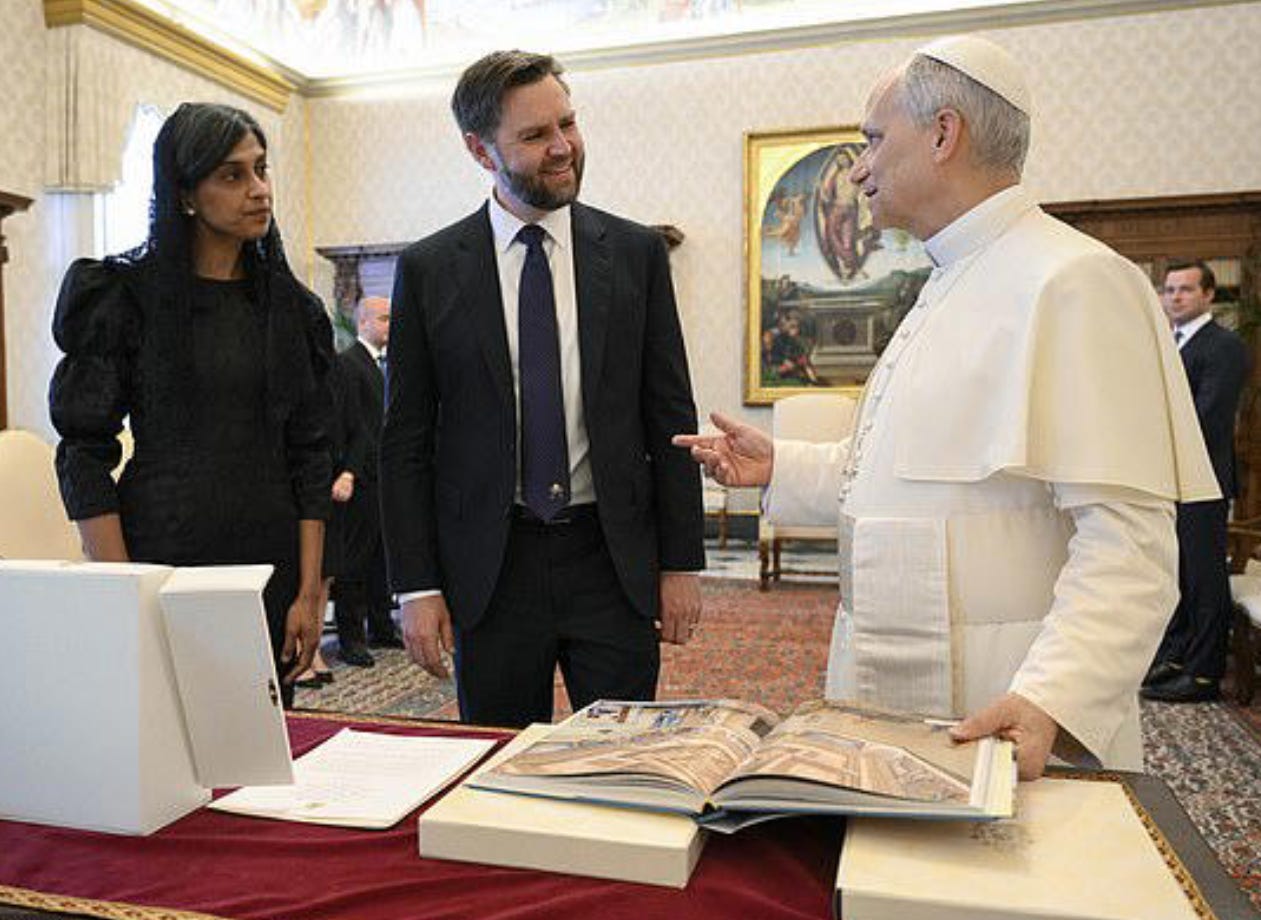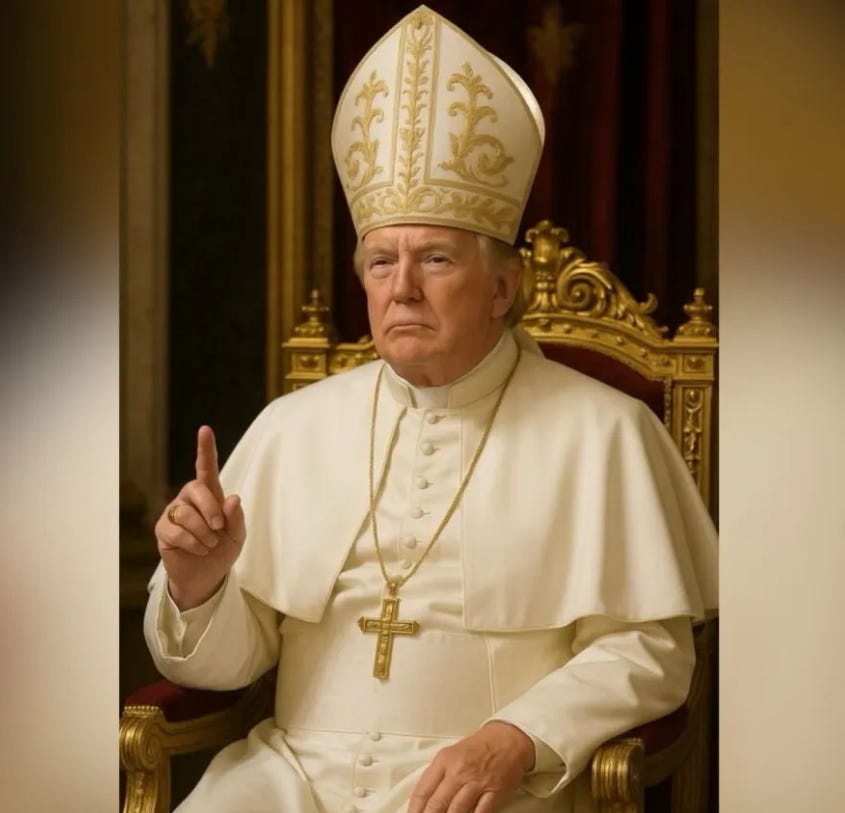Faith, Fabrication & the Future: Spring 2025 in Rome
Trump, Vance & the Pope illuminate the existential crisis faced by Western Civilization
Frank Holmes is a long-time friend of ResourceWars and one of the most thoughtful market pros on Wall Street. Frank is the CEO and CIO of U.S. Global Investors, a well-known investment manager with over $1.2 billion under management. He is also Executive Chairman of HIVE Digital Technologies, the world’s 11th-largest public holder of Bitcoin.
Frank wrote the following op/ed below late last week and sent it over for me to read. Immediately I asked him if I could distribute it to the ResourceWars audience and he graciously agreed. It does a terrific job of summarizing the existential crossroads Western Civilization finds itself at.

Faith, Fabrication & the Future: Spring 2025 in Rome
By Frank Holmes
In April 2025, a synchronistic convergence in Rome revealed the evolving interplay of faith, politics, and digital culture. What began as a solemn moment became a prism through which we witnessed the competing forces shaping leadership in our age.
Vice President J.D. Vance arrived in Rome to visit a dying Pope Francis—a gesture of reverence steeped in historical symbolism. A Catholic convert and champion of ordered moral responsibility, Vance’s presence signaled a conservative resurgence. It was a quiet but strategic handoff, suggesting that the battles of conscience and policy are far from over.
Days later, Donald Trump detonated a cultural moment of a different kind. On social media, he posted an AI-generated image of himself dressed as the pope—viral, jarring, and calculated. It was more than a meme; it was a declaration. In a world where attention is currency, Trump claimed symbolic supremacy not through tradition, but through traction.

Then came the unprecedented: the election of Cardinal Robert Prevost of Chicago as Pope Leo XIV—the first American to ascend to the papacy. His rise marked a westward shift in the Church’s center of gravity. The Vatican, long anchored in old-world tradition, now found itself infused with new-world dynamism. For the Catholic Church, this was not merely a change in leadership; it was a reorientation of identity.
Three moments—Vance’s reverence, Trump’s spectacle, Leo XIV’s ascent—offered three distinct models of influence: the strategic, the performative, and the institutional. Together, they reflect the ways power operates today: through physical presence, digital image, and narrative control.
Even within the Church, these tensions were evident. Pope Francis’ final message, invoking the parable of the Good Samaritan, urged the world toward institutional compassion and care for the vulnerable. Vance, by contrast, has long emphasized moral order, personal duty, and the rebuilding of family and nation. Their philosophies clashed at the very edge of the papal deathbed—two versions of faith in public life, standing respectfully apart.
Trump’s AI papacy, meanwhile, underscored a deeper crisis: in the digital arena, authenticity is optional—virality is victory. When a synthetic image can command more engagement than sacred ritual, we are reminded that truth no longer has a monopoly on influence.
Steve Jobs once said, “You can’t connect the dots looking forward; you can only connect them looking backward.” That week in Rome was more than a religious transition. It was a snapshot of a civilization at a crossroads—grappling with belief, leadership, and reality itself.
A Church reimagined. A politics of symbols. A new pope—American, human—tasked with navigating a world where the sacred must now contend with the synthetic.
The dots were always there. We just had to see them.




